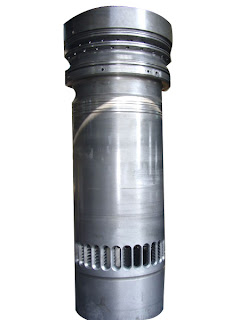Diesel Engine Cylinder Liner

Diesel Engine Cylinder Liner
1. Function of cylinder liner
1) Formed cylinder working space with cylinder cover and piston.
2) Cylinder liner of trunk piston diesel withstands side thrust of piston, so it becomes lead of piston reciprocating action.
3) Transmit heat of piston assembly and self-heat to cooling water to keep its proper working temperature.
4) Cylinder liner of two stoke diesel engine is equipped with vent; it is hoisted by piston to achieve air distribution.
2. Working condition
Inside cylinder liner is directly affected by high-temperature and high-pressure gas, and always produce high-speed slide friction with piston rings and piston skirts. While its outer touch with cooling water, producing serious thermal stress under big difference in temperature and corroded by cooling water. Side thrust from piston not only acerbates inside friction of cylinder liner, but also makes it bent. When side thrust changes its direction, piston will strike cylinder. Besides, it has to withstand high installation preload.
Gas pressure make cylinder face produce tangential tensile stress and radial compressive stress, which is maximal inside, this kind of stress is radio frequency pulsating stress.
Serious thermal stress produced by difference in temperature between inside and outside of cylinder face, so, under normal temperature, inside wall produces compressive stress while cooling face produces tensile stress. But under extremely high temperature, metal of inside wall will be distorted and form residual stress when cooling. This low frequency caused by engine starting and stopping will make the material tired.
3. Requirements
Diesel engine cylinder liner should be with high strength, hardness, heat-resisting and abrasion-proof property. Smooth lubrication and cooling should be available during working.
Cylinder liner usual uses wear-resisting cast iron alloy including phosphor or boron as its material, such as HT25-47、HP-CuCrMo, etc. Inside cylinder liner sometimes is in process of chrome plating (spongy chromium plating, oil stored chromium plating), nitrogen and phosphorization to improve wear-resisting performance. Inside temper must be bigger than HB200 and fit well with piston ring temper; proper roughness with oil storing ability and running-in characteristic; with enough roundness and cylindricity precision to assure position accuracy between installing bearing face and central inner hole.



Comments
Post a Comment